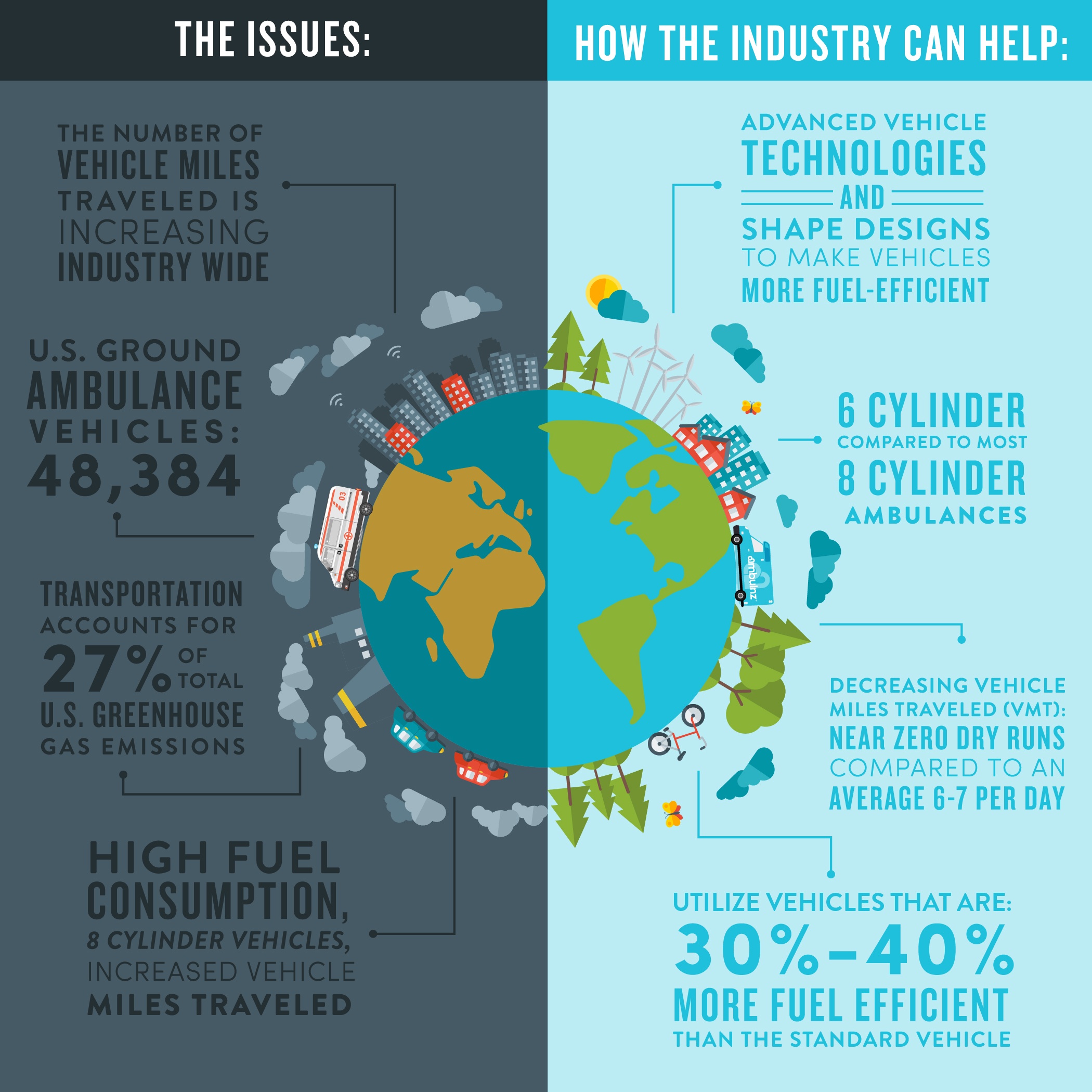It’s no secret that carbon dioxide (CO2) emissions are the primary greenhouse gas emitted by humans. But did you know that transportation is the second largest share of total emissions, accounting for 27% of the total U.S. greenhouse gas emissions? That’s more than a quarter of the 15.1 trillion pounds we can attribute to CO2 emissions.
The greenhouse effect is the warming of the Earth’s surface due to the increase in greenhouse gases in the air that traps energy from the sun. The increasing amount of greenhouse gases in the air, in turn, increases the amount of energy being trapped and overheats the planet.
So what does this have to do with Emergency Medical Services? In the U.S, there are roughly 49,000 U.S. ground ambulance vehicles in service. While there’s no negating the positive effects emergency vehicles have on our society, it is our responsibility as citizens to evaluate the complete picture. This large amount of ground ambulance services contributes to the epidemic of growing greenhouse gases.
The number of vehicle miles traveled (VMT) is increasing industry-wide, contributing to high fuel consumption and higher CO2 emissions. Dry runs and idling times are also a big concern in the ambulance industry.
So what can we do to make a dent in our footprint?
There are plenty of steps the EMS industry can take to ensure that our industry is saving lives in an eco-friendly manner. To start, our industry-wide goal should be to switch over all emergency vehicles to gas versus diesel. The next step is to utilize 6 cylinder vehicles, compared to the industry standard 8 cylinder. By making these changes we can deliver as much as a 46% better gas mileage than similar rigs.
In addition to switching the vehicles we use on a daily basis to be more fuel efficient, EMS companies should focus on operations that help decrease the vehicle miles traveled and idling time. Decreasing dry run rates near zero can spare the planet of unnecessary additional greenhouse gases. Dedicated organization protocols and advanced technologies allow us to do so.
As humans, it is our responsibility to make sure we are doing all we can to contribute to the decreasing of greenhouse gases and global warming. At the end of the day, it is our planet and our children’s lives we are working so hard to make better. As an industry, we can take the first steps in an active field to improve our footprint as a whole.
Resources:
-EPA: https://www.epa.gov/greenvehicles/fast-facts-transportation-greenhouse-gas-emissions
-Climate Change Indicators in the United States: U.S. Greenhouse Gas Emissions: Aug 2016 -https://www.epa.gov/sites/production/files/2016-08/documents/print_us-ghg-emissions-2016.pdf
-NAEMT: National Association of Emergency Medical Technicians: http://www.naemt.org/About_EMS/statistics.aspx






